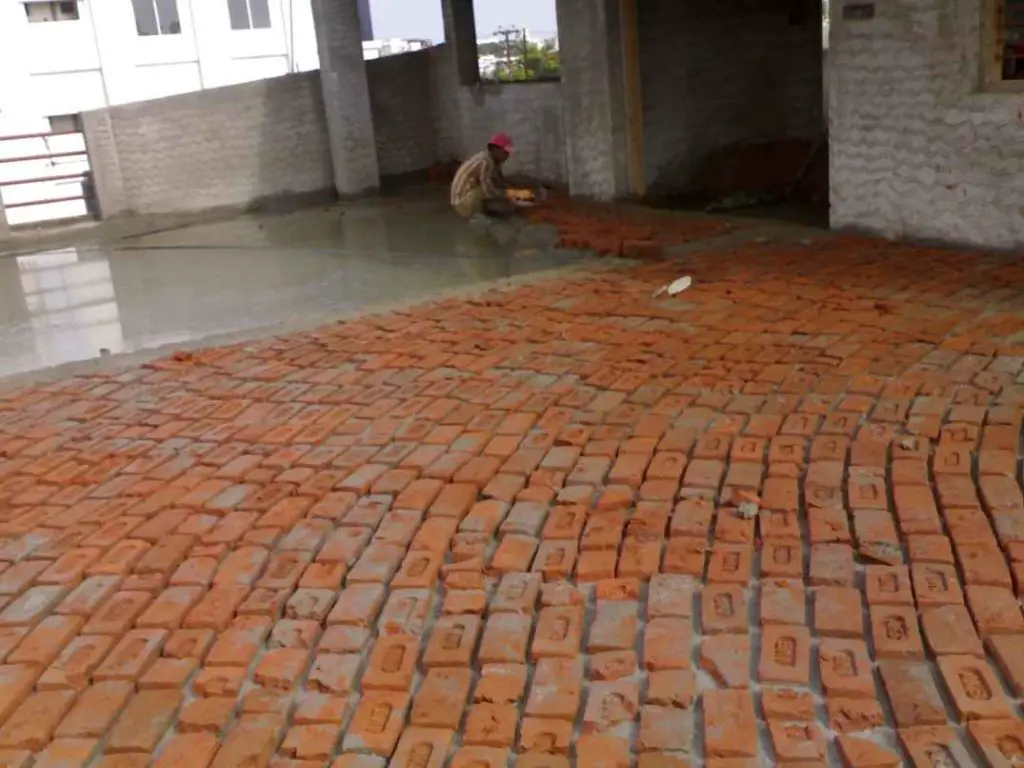Brickbat Coba waterproofing is an efficient method of providing waterproofing and insulating for thermal comfort on flat RCC roofs.
It is one of the oldest waterproofing technologies, including the installation of brickbats on a flat RCC roof & grouting them with a waterproofing solution with a slope to drain groundwater.
In this article you’ll learn:
- Purpose of the Brickbat Coba waterproofing.
- Types of the Brickbat Coba waterproofing.
- Merits and Demerits Brickbat Coba waterproofing.
- Lots more.
So, if you’re ready to go with a Brickbat Coba waterproofing this article is for you.
Let’s begin!
What is Brickbat Coba Waterproofing?
BrickBat Coba Waterproofing is the oldest technique for waterproofing constructions.
Brick Coba is the earliest technique of waterproofing structures, consisting of putting Brocken bricks on the flat surface of concrete and grouting it with a waterproofing solution with the right slope to drain off rainfall.
Purpose of brickbat Coba Waterproofing:
- It is a conventional form employed by the primitive civilizations in which they put broken bricks in the slab to absorb excess moisture and prevent moisture from entering.
- It will aid in keeping the structure’s temperature stable. To avoid water from entering the buildings.
- Brickbat Coba also aids in the protection of the structure from leaks. In the summertime, it will help to protect against the heat and keep the building cool.

Process of Brickbat Coba Waterproofing:
1. Surface Cleaning:
The covering on the slab’s upper edge must be removed and the surface cleaned with a strong wire brush and water in the case of existing pre-treatment.
In the case of a new slab, the surface of the concrete must be roughened by scraping.
If the slab has been cast and the surface has been fully finished, it must be thoroughly cleaned of all mortar droppings, loose materials, and so on.
The primary purpose of surface preparation is to remove any oil, filth, debris, and so on from the slab’s surface.
Standard practice requires that proper precautions be taken for any structural cracks.
2. Application of Slurry and Base Coat:
The slurry is prepared to the required consistency with cement and water.
Brushes must be used to lightly cover moistened surfaces, like connections between the floor slab and the parapet wall, holes in the surfaces, and pipe joints in masonry or concrete.
The optimum amount of cement for slurry preparation is 2.75 kilograms per square meter.
The slurry’s pot life must be deemed to be 1/2 hour. The slurry is applied up to 300 mm well above the parapet wall.
A 25mm thick foundation layer is applied immediately after slurry coating, while the implementation is still green at brickbat Coba waterproofing.
3. Installation Brickbat:
The dimension (65mm to 120mm) brickbats are set with a spacing of 15 to 20mm while the base coat is still greenish.
While placing, the brickbats must be completely burned and thoroughly soaked overnight.
After laying the brickbats, the spaces between them are filled with the same blended mortar that was used for the covering for at least 24 hours.
4. Application of a Protective Coat:
According to the manufacturer’s specifications, a brickbat Coba waterproofing compound according to IS 2645 is combined with the cement water combination.
As a result, no more than 3 percent of the total of the waterproofing compound per 50 Kg of grey cement is used.
The waterproofing compound is combined with a 1:4 cement mortar and applied to the entire surface, including the haunches/ gola and 300mm on the outer walls.
The surface is nicely polished with a wooden / steel hand float.
When 300mm x 300mm square markings are formed across the whole surface, the final surface should be left to cure for a while until a string mark can easily be adapted on it.
5. Curing:
So, this whole treated surface will be inundated with water by building bunds using low cement mortar. Curing must be carried out for a minimum of two weeks.
Advantages of brickbat Coba Waterproofing:
- It contributes to the prevention of moisture intrusion into the building.
- Brickbat Coba is an extremely effective way of Waterproofing when compared to other techniques.
- The waterproofing bricks collect rainfall and protect the structure from leaks.
- This is best suited to places where the annual rainfall exceeds the average rainfall.
- Brickbat Coba insulates structures from climatic fluctuations and aids in the maintenance of building temperature.
Disadvantages of Brickbat Coba Waterproofing:
- Brickbat Coba has a thickness of around 125 mm to 150 mm, which enhances the dead load of the building.
- The Brick Bat Coba requires expensive and sophisticated maintenance.
- Because of its rigidity, the Brickbat Waterproofing may develop fractures.
- If cracks form, it will be unable to fix them and keep moisture from entering for an extended length of time.
- Since it is affected by environmental fluctuations and heavy rains, the Brick Bat Coba waterproofing demands outstanding craftsmanship.
Also read: Superplasticizer | Waterproofing Membrane | Admixture
Conclusion:
Brickbat Coba Waterproofing is appropriate for constructions where the yearly rainfall is more than the area’s normal rainfall.
If you intend to create an extra floor in the future, it is not advisable to use brick Bat Coba for the patio.
And if you build the top level in this situation, it will be a waste of time and money.

Related Posts
Rock Quality Designation(RQD): Building Strong Foundations
Spread Footing
Masonry Cement
Plain Cement Concrete
Concrete Efflorescence
Concrete Pile
Stepped Footing
Fineness Modulus of Coarse Aggregates
Difference between Condo and Apartment